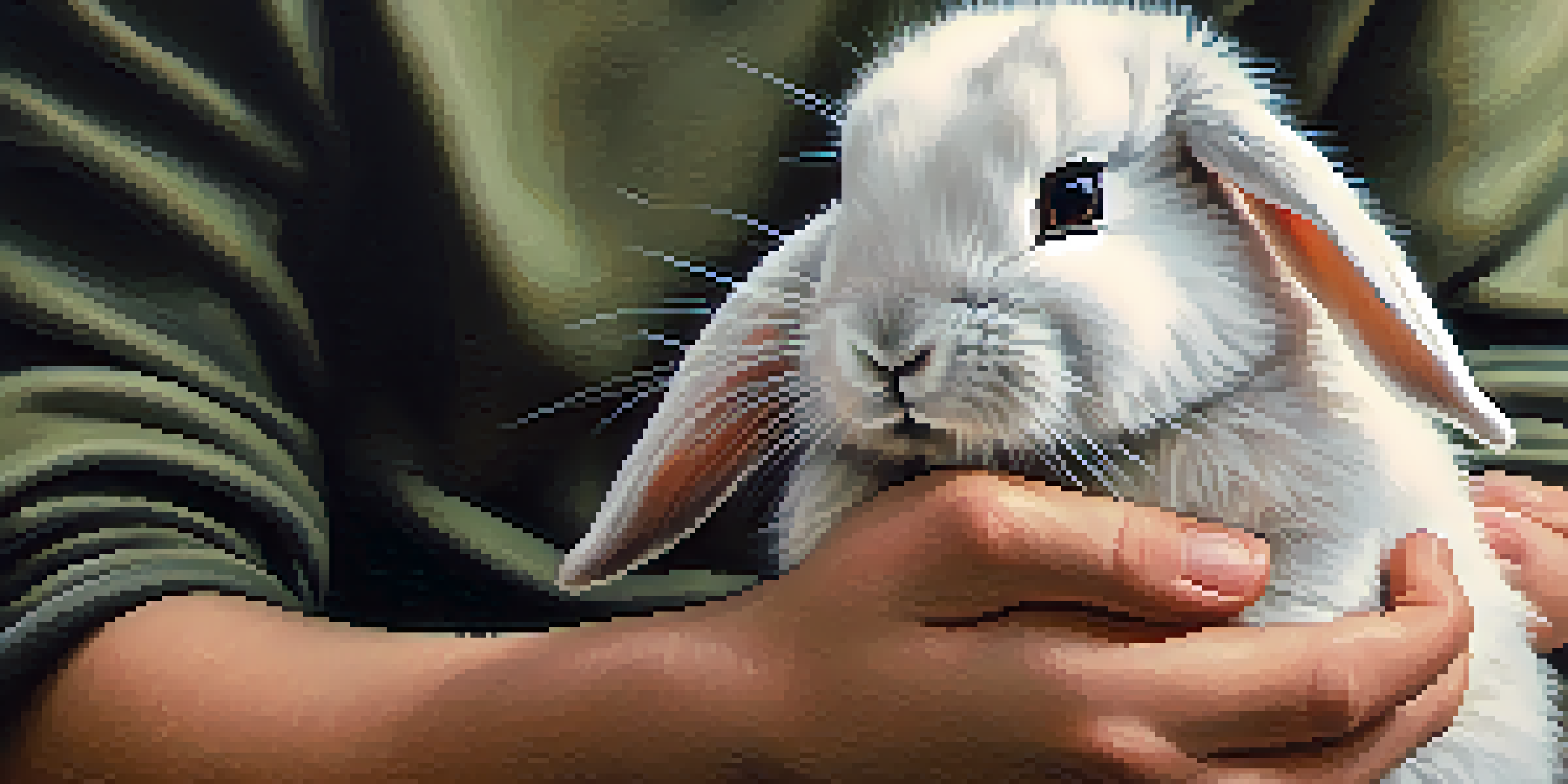The Benefits of Pet Therapy for Seasonal Affective Disorder

Understanding Seasonal Affective Disorder (SAD)
Seasonal Affective Disorder, commonly known as SAD, is a type of depression that occurs at certain times of the year, typically in the fall and winter months. Its symptoms can include feelings of hopelessness, fatigue, and a lack of interest in activities once enjoyed. The reduced sunlight during these months is believed to disrupt our biological clock and lead to mood changes.
Until one has loved an animal, a part of one's soul remains unawakened.
Many individuals suffering from SAD find it challenging to cope with these symptoms, which can significantly impact their daily lives. This is where pet therapy comes into play, offering a unique and effective approach to alleviating some of the emotional burden associated with this disorder. By harnessing the unconditional love and companionship of pets, individuals may find a sense of comfort and relief.
Understanding SAD is essential to appreciating how pet therapy can help. As we dive deeper into the benefits of pet therapy, we will explore how these furry friends can provide much-needed support during the darker months.
How Pets Improve Mood and Well-Being
Pets are known to bring joy and companionship into our lives, and their presence can have a profound impact on our mood. Simply petting a dog or cat can trigger the release of endorphins, which are natural mood lifters. This simple act can create a sense of calm and happiness, especially beneficial for those experiencing SAD.

Moreover, pets encourage physical activity, whether it's taking a dog for a walk or playing with a cat. Engaging in physical activities can help combat the lethargy that often accompanies SAD. Increased movement not only boosts mood but also promotes overall health, creating a positive feedback loop.
SAD: A Seasonal Struggle
Seasonal Affective Disorder (SAD) is a type of depression triggered by seasonal changes, particularly during the fall and winter months.
Lastly, the responsibilities associated with pet ownership can provide structure and purpose to daily life, which can be particularly helpful when feelings of hopelessness set in. This combination of companionship, activity, and purpose creates a supportive environment for individuals managing SAD.
The Power of Unconditional Love from Pets
One of the most remarkable aspects of pet therapy is the unconditional love that pets offer. Unlike humans, pets do not judge or criticize; they simply provide companionship and comfort. This can be especially important for individuals with SAD, who may feel isolated or misunderstood during challenging times.
The greatness of a nation and its moral progress can be judged by the way its animals are treated.
The bond between humans and their pets can foster a sense of belonging, reducing feelings of loneliness that often accompany depression. This emotional support can be transformative, allowing individuals to feel more connected and supported in their journey through SAD.
Additionally, pets can sense their owner's emotions, often providing comfort during moments of distress. This intuitive connection can be incredibly healing, reinforcing the idea that we are never truly alone, even in our darkest moments.
How Pet Therapy Encourages Social Interaction
For many individuals with SAD, social interaction can be challenging. However, pets can act as a social catalyst, encouraging connections with others. Walking a dog or attending pet-friendly events can lead to spontaneous interactions with fellow pet lovers, helping to break the cycle of isolation.
Moreover, discussing pets can be a great conversation starter. Sharing stories about our furry companions can create bonds and foster relationships, which is essential for mental well-being. These connections can provide a sense of community and belonging, easing the feelings of loneliness often associated with SAD.
Pets Provide Emotional Support
The unconditional love and companionship of pets can significantly alleviate feelings of isolation and hopelessness associated with SAD.
In essence, pets not only offer comfort but also create opportunities for social engagement, which can be a powerful antidote to the isolation experienced during the winter months.
The Therapeutic Benefits of Routine with Pets
Establishing a routine is crucial for managing SAD, and pets can play a significant role in this. Caring for a pet requires daily tasks, such as feeding, walking, and grooming, which can help individuals create a sense of structure in their day. This consistency can be beneficial in combating the unpredictability of mood swings associated with SAD.
Furthermore, routines can provide a sense of normalcy and control, which can be comforting during difficult times. Knowing that a pet relies on you for care can motivate individuals to get out of bed and engage in daily activities, even when they might not feel like it.
Ultimately, the routine that comes with pet ownership can serve as a gentle reminder of the importance of self-care, helping to ease the burdens of SAD.
Pet Therapy as a Complementary Treatment
While pet therapy offers numerous benefits, it's essential to view it as a complementary treatment rather than a standalone solution for SAD. Many individuals may find relief through traditional therapies, such as counseling or medication, and combining these approaches with pet therapy can enhance overall well-being.
Incorporating pets into a treatment plan can create a holistic approach to managing SAD. The joy and affection from pets can serve as a valuable supplement to professional help, providing emotional support that can make other therapeutic methods more effective.
Routine Enhances Well-Being
Establishing a daily routine through pet care can create structure and stability, helping individuals manage the unpredictable mood swings of SAD.
It's crucial to consult with a mental health professional to explore how pet therapy can fit into a broader treatment strategy. This collaborative approach can empower individuals to take control of their mental health journey.
Finding the Right Pet for Therapy
Choosing the right pet for therapy is an important decision that can greatly impact the experience. While dogs and cats are the most common therapy animals, other pets, such as rabbits or even guinea pigs, can also provide comfort and companionship. It's essential to consider the personality and temperament of the pet, as well as individual lifestyle needs.
Additionally, some individuals may benefit from adopting rescue animals, as these pets often have stories of resilience and can bring a unique bond to the relationship. The act of fostering or adopting a pet can also provide a sense of purpose, further enhancing the therapeutic experience.

Ultimately, finding the right pet involves understanding personal preferences and lifestyle compatibility. The connection formed with a pet can lead to a fulfilling and supportive relationship that aids in navigating the challenges of SAD.
Conclusion: Embracing Pet Therapy for a Brighter Tomorrow
In conclusion, pet therapy offers a range of benefits for individuals dealing with Seasonal Affective Disorder. From improving mood and providing companionship to encouraging social interaction and establishing routines, pets can truly be lifelines during challenging times. Their unconditional love and support can help alleviate feelings of isolation and despair.
As we continue to explore innovative ways to support mental health, incorporating pet therapy stands out as a heartfelt and effective approach. It's essential to recognize that while pets can play a significant role in healing, they work best alongside other treatments and support systems.
Embracing the companionship of a pet may just be the key to brightening the darker months and fostering resilience against the challenges of SAD.